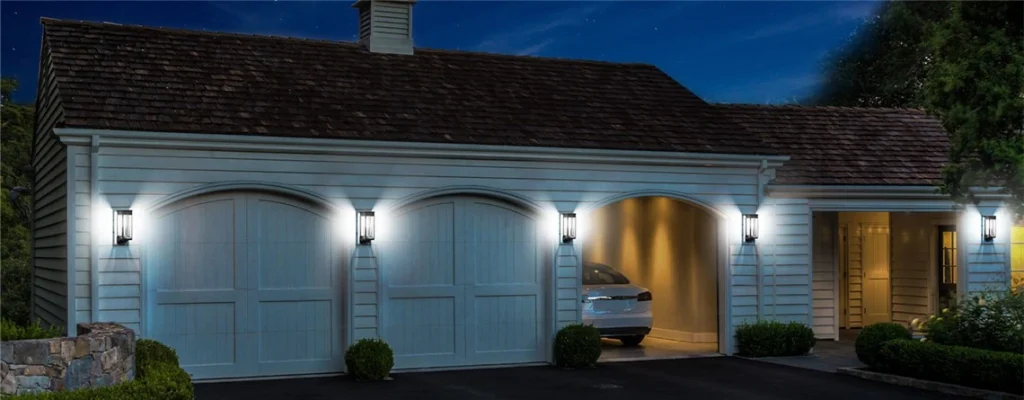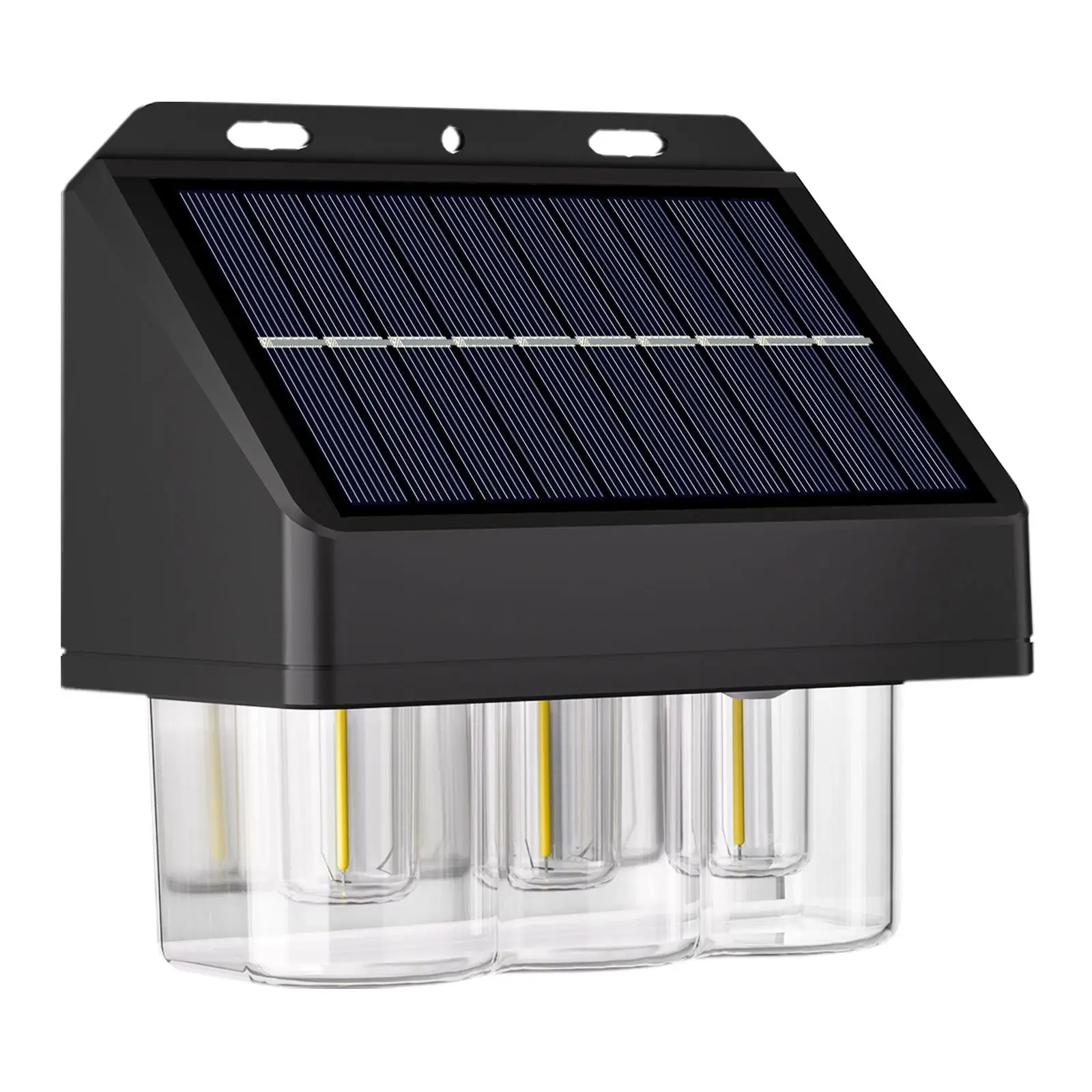Wall mount solar lights outdoor offer an eco-friendly, efficient solution for illuminating pathways, porches, and backyards. These lights harness solar energy and combine it with motion-sensing technology to provide reliable lighting exactly where and when it’s needed. Designed for durability and ease of use, they are ideal for enhancing security and ambiance in various outdoor settings. This comprehensive guide explores the technical aspects, installation tips, and maintenance strategies to maximize the performance of wall mount solar lights outdoor, tailored to meet diverse homeowner needs.

Wall-Mounted Structure: Choosing Accessories for Brick, Wood, or Metal Surfaces
Selecting the right mounting accessories for wall mount solar lights outdoor is crucial for ensuring a secure and long-lasting installation. The type of wall surface—brick, wood, or metal—determines the appropriate hardware. For brick surfaces, common in historic homes in Boston, masonry anchors and screws provide a sturdy hold. These anchors expand within the brick, ensuring the light withstands wind and weather. For wooden surfaces, like those found on cabins in Colorado, wood screws with a corrosion-resistant coating are ideal to prevent rust and maintain structural integrity. Metal surfaces, often seen in modern homes in Miami, require self-tapping screws or toggle bolts to ensure a firm grip without damaging the wall.
Before installation, assess the wall’s condition. For older brick walls in Chicago, check for cracks or loose mortar, as these can compromise the mount’s stability. On wooden surfaces in Seattle, ensure the wood is treated to resist moisture, preventing rot around the mounting point. For metal walls in Phoenix, confirm the surface is clean and free of rust to avoid corrosion. Using a level during installation ensures the light is properly aligned, optimizing both aesthetics and functionality. By matching the mounting hardware to the wall material, homeowners can achieve a secure installation that enhances the durability of their wall mount solar lights outdoor.
Solar Panel Orientation: Optimizing Height and Sunlight Trajectory
The efficiency of wall mount solar lights outdoor depends heavily on the solar panel’s orientation and height. Solar panels must be positioned to capture maximum sunlight, which varies based on geographic location and seasonal sun trajectories. In regions like San Diego, where sunlight is abundant year-round, mounting the panel at a 30- to 45-degree angle facing south maximizes exposure. In areas like Portland, where cloud cover is common, a slightly steeper angle can help capture diffuse sunlight more effectively.
Mounting height also plays a critical role. A height of 6 to 8 feet is typically ideal for wall-mounted lights, balancing accessibility with optimal sunlight capture. In suburban neighborhoods in Atlanta, where trees may cast shadows, homeowners should trim overhanging branches to prevent shading. Using adjustable mounts allows for seasonal adjustments, ensuring the panel aligns with the sun’s changing path. For example, a homeowner in Denver might tilt the panel slightly upward in winter to account for the lower sun angle. By carefully planning the panel’s orientation and height, users can ensure their wall mount solar lights outdoor charge efficiently, providing consistent illumination.
Light Coverage Planning: Illuminating Porches, Fences, and Corners
Effective light coverage is essential for maximizing the utility of wall mount solar lights outdoor. Different outdoor spaces—porches, fences, or wall corners—require tailored planning to achieve optimal illumination. For porches, common in homes in Raleigh, a light with a 120-degree beam angle ensures broad coverage, illuminating entryways and deterring intruders. Positioning the light above the door, around 7 feet high, provides ample light for safety and visibility.
For fences, such as those surrounding backyards in Dallas, narrower beam angles (60-90 degrees) focus light along pathways or perimeters, reducing light spillage onto neighboring properties. Corner-mounted lights, popular in townhouses in Los Angeles, benefit from dual-head designs that allow adjustable angles to cover intersecting areas. For example, a corner light in a Miami backyard can be angled to illuminate both a patio and a garden path. Motion sensors should be calibrated to detect movement within 20-30 feet, depending on the space’s size. By strategically planning the placement and beam angle of wall mount solar lights outdoor, homeowners can achieve precise, effective lighting tailored to their property’s layout.
Weatherproofing Upgrades: Waterproof Seams and Anti-Corrosion Contact Points
Durability is a key advantage of wall mount solar lights outdoor, but proper weatherproofing ensures long-term performance in harsh conditions. Waterproof seams are critical, especially in rainy climates like Seattle. High-quality lights feature silicone gaskets or rubber seals around joints to prevent water ingress, protecting internal components. Homeowners should inspect these seals during installation and replace any damaged ones to maintain IP65 or higher waterproof ratings.
The contact point between the light and the wall also requires attention. In coastal areas like San Diego, where salt air accelerates corrosion, stainless steel or aluminum mounting brackets resist rust. Applying a corrosion-resistant coating to screws and anchors further enhances durability. For wooden walls in Minneapolis, where freeze-thaw cycles are common, a sealant around the mounting area prevents moisture from seeping into the wood. Regular inspections, especially after storms, ensure that seals and coatings remain intact. By prioritizing weatherproofing, wall mount solar lights outdoor can withstand diverse environmental challenges, maintaining functionality year-round.

Load-Bearing Safety: Testing and Reinforcing Installation Points
Ensuring the structural integrity of the mounting point is critical for the safety of wall mount solar lights outdoor. The weight of the light, combined with environmental factors like wind, requires a robust installation. For brick walls in Philadelphia, a load-bearing test using a stud finder or tapping method identifies solid anchor points. If the wall is weak, reinforcing it with a mounting plate distributes the weight more evenly.
On wooden surfaces in Nashville, check for studs or use toggle bolts for added strength, especially for heavier light models. Metal walls in Phoenix may require additional support, such as a backing plate, to prevent bending under stress. For example, a homeowner in Austin installing a large wall mount solar light outdoor on a wooden fence might add a cross-brace to enhance stability. Testing the mount’s strength by applying gentle pressure before finalizing the installation prevents future failures. Using high-quality, weight-rated hardware ensures the light remains securely attached, even in high-wind conditions.
High-Altitude Maintenance: Easy Cleaning and Battery Replacement
Maintaining wall mount solar lights outdoor at elevated heights requires designs that prioritize accessibility. Many models feature detachable solar panels and battery compartments, simplifying cleaning and replacement. In dusty regions like Albuquerque, solar panels can accumulate dirt, reducing charging efficiency. A removable panel allows homeowners to clean it with a soft cloth and mild detergent without dismantling the entire unit.
Battery replacement is another consideration. Most wall mount solar lights outdoor use rechargeable lithium-ion batteries, which last 2-3 years. A tool-free, snap-on battery compartment, common in high-quality models, makes replacement straightforward. For lights mounted at 8-10 feet in areas like Charlotte, a telescoping pole or step ladder ensures safe access. Regular maintenance, performed every 6 months, includes cleaning the solar panel and checking battery connections. By choosing lights with user-friendly designs, homeowners can maintain their wall mount solar lights outdoor efficiently, ensuring consistent performance.
Conclusion: Unlocking the Full Potential of Wall Mount Solar Lights Outdoor
Wall mount solar lights outdoor combine sustainable energy with advanced technology to deliver reliable, eco-friendly outdoor lighting. By selecting the right mounting accessories, optimizing solar panel orientation, and planning light coverage, homeowners can tailor these lights to their specific needs. Weatherproofing upgrades and load-bearing safety measures ensure durability, while accessible designs simplify maintenance. Whether illuminating a porch in Boston, a fence in Dallas, or a corner in Los Angeles, these lights enhance security and ambiance.
With proper installation and regular upkeep, wall mount solar lights outdoor offer a long-lasting, cost-effective solution for outdoor illumination. By following the tips outlined in this guide—choosing appropriate hardware, adjusting for sunlight, and maintaining components—homeowners can maximize the performance and lifespan of their lights, creating well-lit, inviting outdoor spaces for years to come.


Leave a Reply